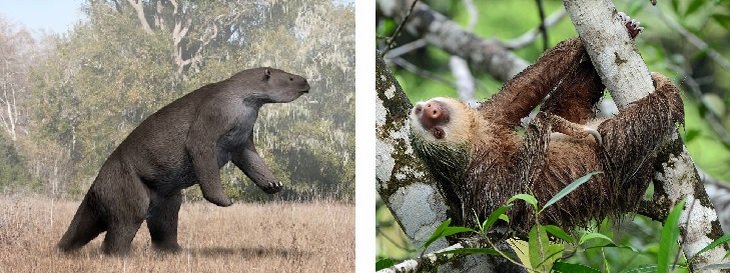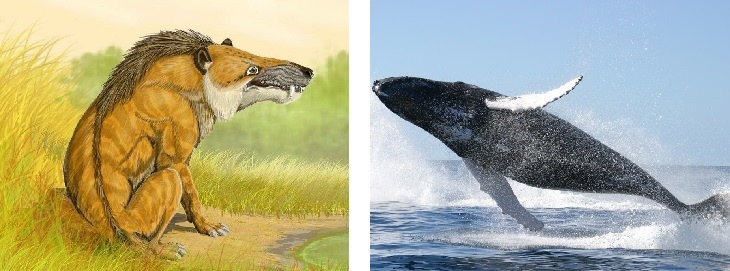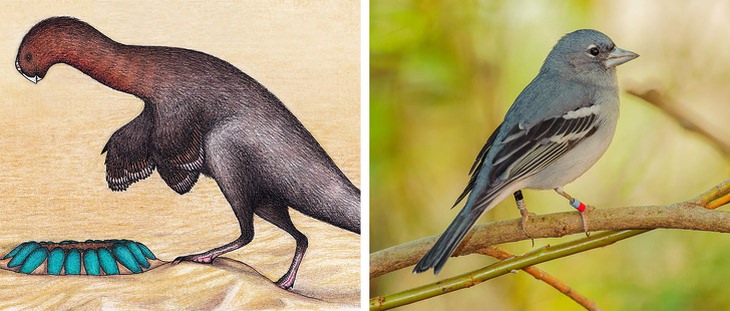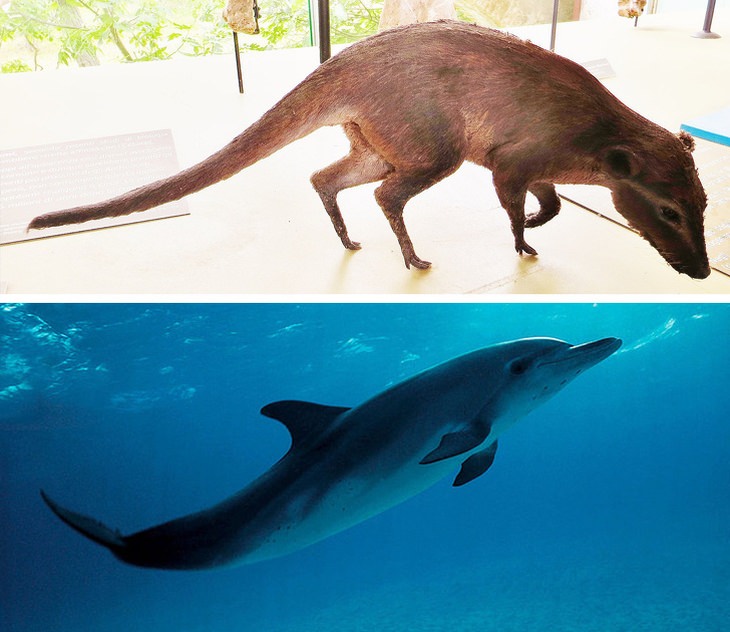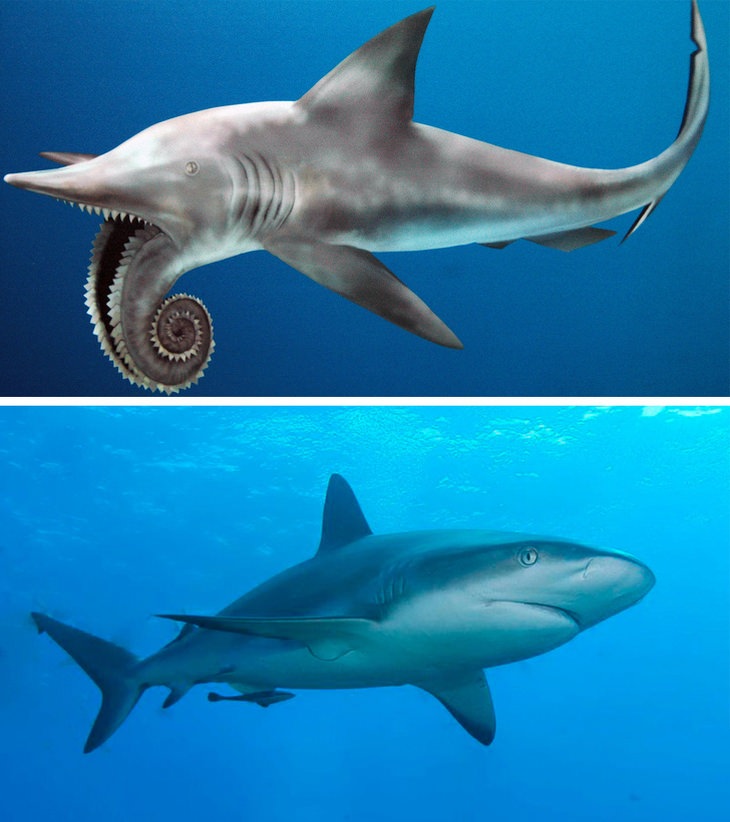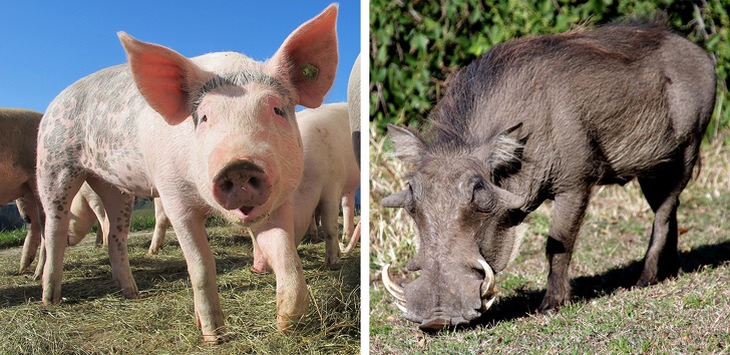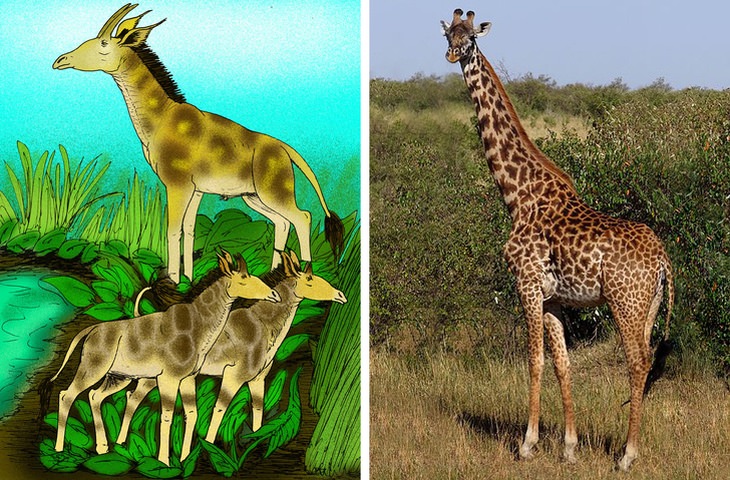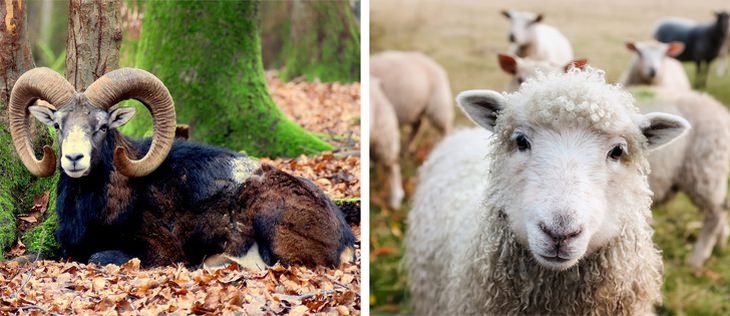Evolution has played a bad joke on sloths. Once, elephant-sized ground sloths of numerous species from the genus Megatherium were roaming the lands of South America. For reasons unknown, these animals were ultimately ousted onto trees and turned into the cute arboreal critters we recognize as sloths today.
2. Whales
Now that's what I call a transformation! Widely believed to be the mutual ancestor of both whales and hippos, Andrewsarchus was an elephant-sized carnivore that lived in central Asia more than 40 million years ago. It may have been the largest carnivorous mammal that ever lived on solid ground.
3. Goldfish
Goldfish are some of the most popular pets in the world today, but where do they come from? Genetic analysis reveals that goldfish are actually hybrid descendants of the Prussian carp, an unremarkable silverish-green fish species native to Siberia. The species we recognize as goldfish today come from decorative ponds in China, a popular landscape feature in the homes Chinese aristocracy around 2,000 years ago.
4. Birds
It may be difficult to comprehend, but all birds that live on Earth today are descendants of dinosaurs. Whole groups of bird-like omnivorous dinosaurs like the one from the picture called Heyuannia were discovered by archeologists all around the world. Both these so-called transitional species and genetic analysis make researchers believe that birds and dinosaurs are more closely related than we would like to admit.
5. Cows
Aurochs is the ancestor of cattle first domesticated by humans around 10,000 years ago. Once widespread all throughout Asia, Europe, and North Africa, the species was extinct by 1627. We have much to thank these majestic creatures, as they helped people transition from a hunter-gatherer lifestyle to an agricultural one.
6. Dolphins
Dolphins are one of the smartest species on the planet. They stem from a small omnivorous mammal about the size of a raccoon that had pig-like features and lived in Asia millions of years ago, Indohyus. Not unlike the whales, it is just how much the species has changed.
7. Dogs
It was a dispute for a long time, but genetic analysis and cross-breeding experiments prove that all dog species, yes, even the cute corgis on the Internet, come from a mutual pack of African grey wolves that interbred with another unknown and now extinct canine species.
8. Sharks
This weird and very creepy shark ancestor called Helicoprion inhabited the oceans more than 290 million years ago. All fossils of this species feature the so-called "tooth whorls", attached to the lower or upper jaw of the animal. The nature, location, and purpose of these creepy contraptions aren’t clear to this day.
9. Horses
Eurohippus is an archaic animal that inhabited Earth around 50 million years ago. It was quite small, about the size of a small dog like a corgi, but its anatomy, especially the digestive and reproductive systems resembled modern horses. Today it is genetically-proven to be their ancestor. An interesting fact is that Eurohippus didn’t have any hooves: it had 4 toes on its front feet and 3 on the rear feet instead.
10. Rabbits
This 5-million-year old bunny was quite big and chubby. It weighed up ‘til 21kg (51lb), had a smaller head and ears, and couldn’t jump. And yet, much like its contemporary, Nuralagus was quite cute, only with a very different head-to-body ratio!
11. Pigs
Around 9,000 years ago, someone in Turkey dared to capture a herd of wild boars. A few thousand years later, they transformed into the 70 species of docile domesticated pigs we have today.
12. Cats
This grey kitty on the left is by no means a stray, it is the African wildcat (Felis silvestris lybica), the great-grandparent of all domesticated cats. The first cats known to science were cuddled and petted by humans over 9,000 years ago in Cyprus. Although most likely, scientists recently discovered, it was the cats who adopted humans, probably choosing to live among us for the food we leave behind for them to eat. In fact, they are barely domesticated when compared to dogs.
13. Elephants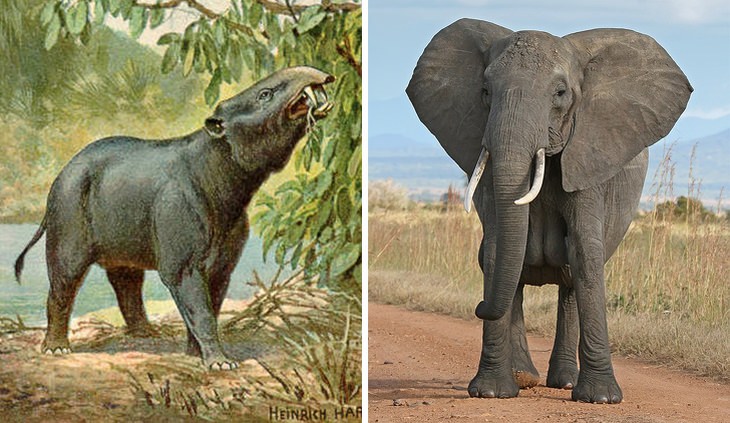
Did you expect to see mammoths? Surprise, surprise, here is an even earlier version of the elephant. Moeritherium were primitive elephants first discovered in Egypt. They were semi-aquatic (living a significant part of their time in water like hippos) and much smaller in size, but still quite heavy and with stubby legs. It may be difficult to see the resemblance with modern elephants because they didn’t have the big dumbo ears and had a much shorter trunk.
14. Giraffes
The ancestors of giraffes had muscular bodies, much shorter necks and very interesting horn-like protuberances that curled upwards on their heads. These beautiful creatures called Samotherium roamed the woodlands of Europe and Asia about 7 million years ago.
15. Sheep
You can probably recognize these brown mountain sheep, as they were featured in media several times for their unique ability to climb unbelievable heights in the steep and rocky Caucasian mountains. Mouflons were first domesticated around 3,000 years ago and were bred for centuries until they shrunk their big horns and gained their characteristic fluffy warm coats.

